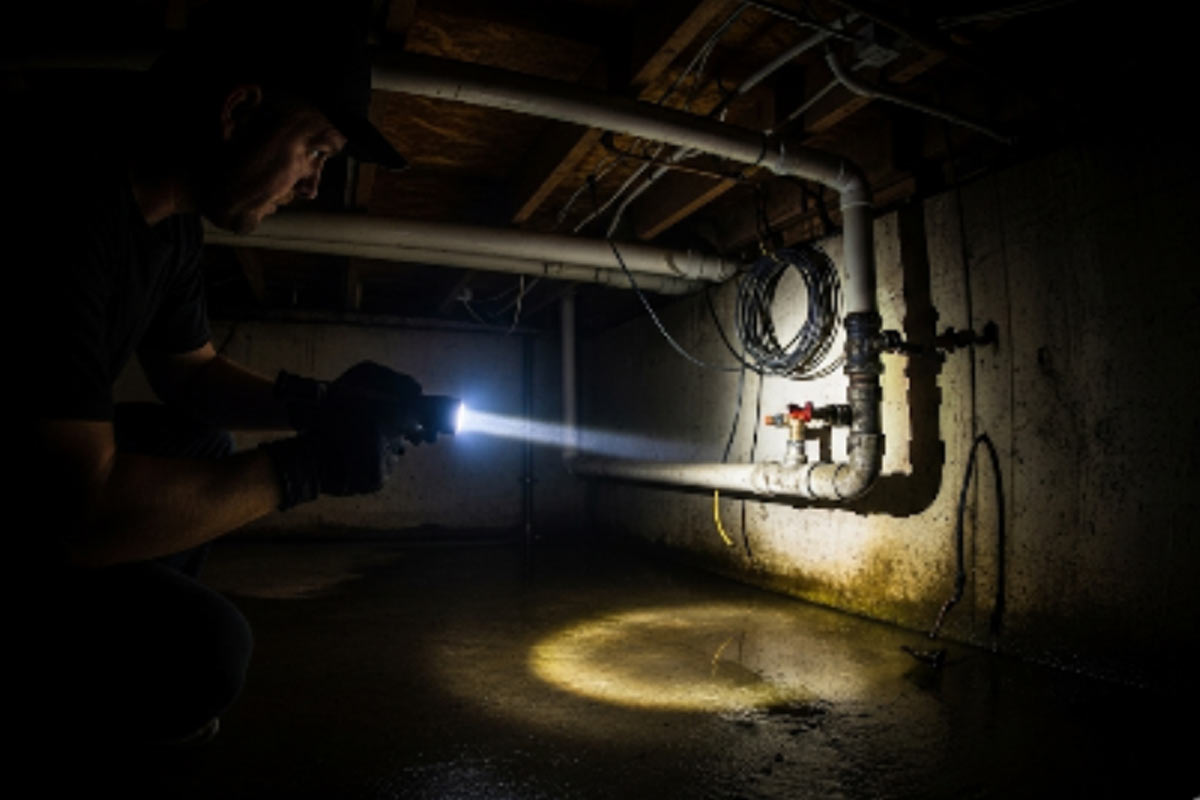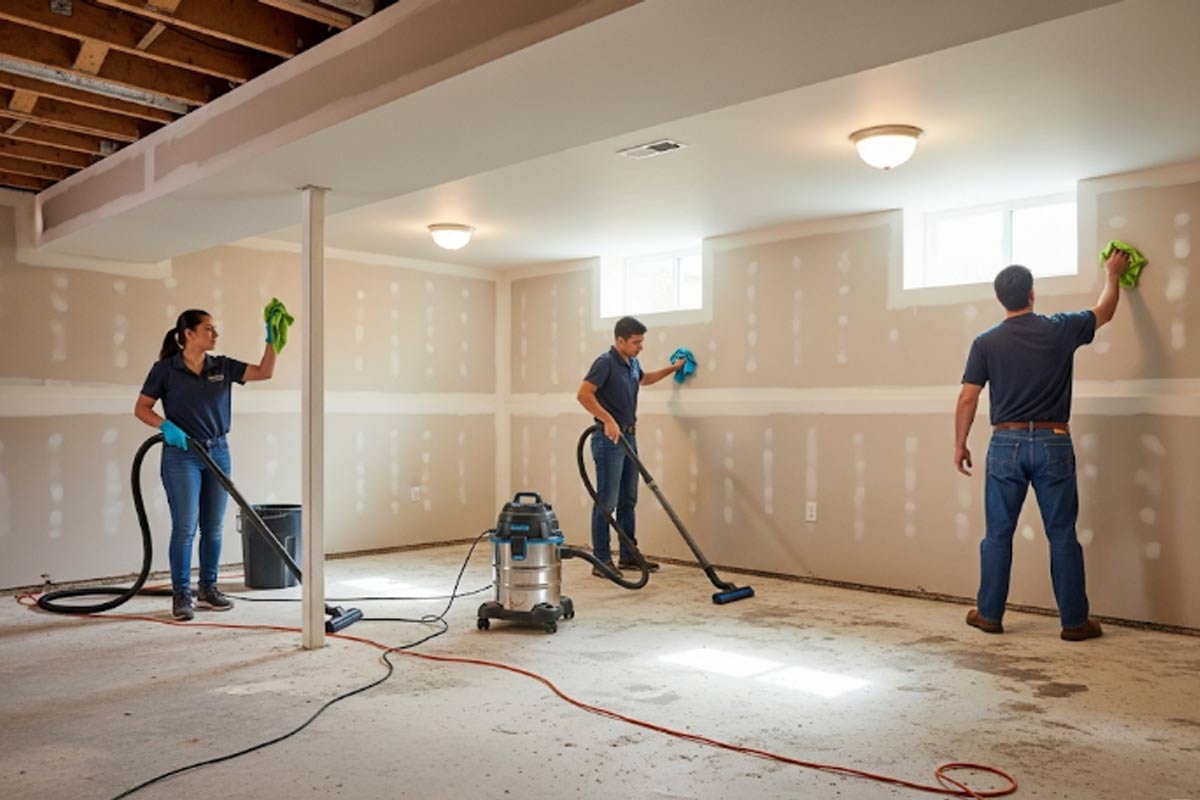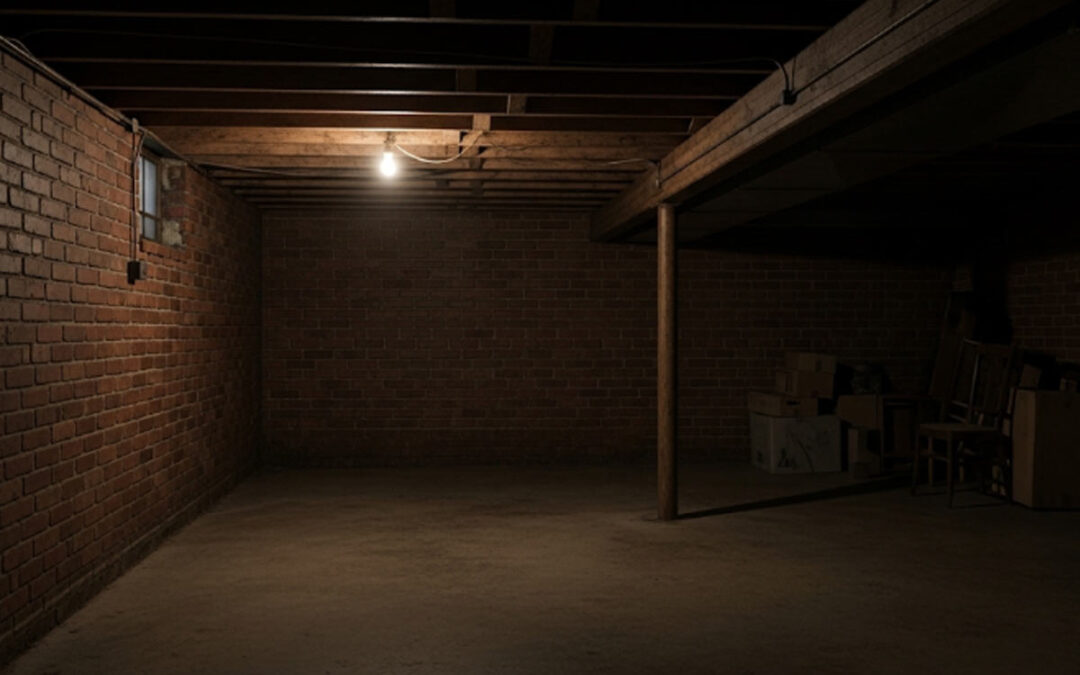Dealing with the uneasy sensation of something unseen moving in your basement, the faint, musty odour, or the general sense of an unwelcome presence below your home is unsettling. Basements, with their typical darkness, humidity, and infrequent disturbance, offer an ideal setting for various pests . These unwanted inhabitants can cause significant problems, ranging from compromising your home’s structure to posing health risks to your family, and they often multiply quickly.
This guide provides a straightforward, actionable checklist to help homeowners identify and address pest issues early. Grab your flashlight and prepare to examine your basement thoroughly.
Why Your Basement is a Pest Haven
Your basement provides an attractive habitat for many pests due to its specific environmental conditions and typical use. Understanding these factors helps homeowners pinpoint potential problem areas during basement pest inspection.
- Darkness and Seclusion : Basements often lack natural light and are less frequently visited than other areas of a home. Pests like rodents, cockroaches, and silverfish prefer dim, undisturbed spaces, making basements a prime refuge. This seclusion offers them safety from human activity and predators.
- Dampness and Humidity : Water sources and high humidity are common in basements, attracting moisture-loving pests such as mould mites, springtails, and centipedes. Leaky pipes, foundation cracks, and poor ventilation contribute to an environment where these pests thrive and reproduce.
- Food Sources : Basements can unintentionally offer a variety of food sources for pests. Stored items, forgotten crumbs, or even pet food can attract ants, mice, and various beetles. Organic debris that accumulates in undisturbed corners also provides sustenance for many insect species.
- Entry Points : Foundations and basement walls often contain small cracks, gaps around pipes, or unsealed vents. These tiny openings serve as easy pest entry points for insects and rodents seeking shelter from the outside. Proper sealing is crucial to prevent infestations.
- Stored Items and Clutter : Many households use basements for storing old furniture, boxes, and miscellaneous items. This clutter creates numerous hiding spots and sheltered pathways for pests, making detection difficult. Rodents especially favour cluttered areas for nesting.
- Consistent Temperatures : Basements generally maintain more stable temperatures than outdoor environments. This consistency provides a comfortable refuge for pests during extreme weather, whether it’s scorching summer heat or freezing winter cold, allowing them to remain active year-round.
Essential Tools for Your Inspection

A successful pest inspection checklist requires specific tools to effectively find and identify unwanted guests. Having the right equipment ensures a thorough examination of every potential hiding spot and signs of pests in basement.
- Bright Flashlight : A powerful flashlight is indispensable for illuminating dark corners, crevices, and areas behind stored items. It helps reveal active pests, droppings, webs, and other subtle signs of an infestation that might otherwise go unnoticed in the dim basement lighting.
- Kneepads and Gloves : Protecting yourself during the inspection is paramount. Kneepads offer comfort when examining low areas, while sturdy gloves protect your hands from dust, sharp objects, and potential contact with pest droppings or nesting materials.
- Magnifying Glass : A magnifying glass allows for close examination of tiny pests, eggs, or very small droppings, which can be crucial for accurate identification. This tool helps distinguish between different insect species and their life stages, aiding in targeted treatment.
- Small Mirror : A small, extendable mirror can be invaluable for inspecting hard-to-reach areas, such as behind pipes, inside wall voids, or underneath large appliances. It allows you to see around corners and into tight spaces without having to move heavy objects.
- Screwdriver/Pry Bar : These tools are useful for gently opening electrical outlets, vent covers, or access panels to check for pest activity within wall voids or concealed spaces. Exercise caution when using these tools, especially around electrical components.
- Note-Taking Materials (Pen/Paper or Digital Device) : Documenting your findings is crucial. A notebook, pen, or a digital device allows you to record observations, locations of pest activity, and any damage found. This record helps in tracking progress and planning future actions.
- Camera/Smartphone : A camera or smartphone can be used to take clear photographs of pests, droppings, damage, or entry points. These images are helpful for identifying unknown pests, showing evidence to professionals, or monitoring the severity of an infestation over time.
Your Basement Pest Inspection Checklist: Area by Area
A systematic approach to your home pest inspection ensures no area is overlooked. Following this room-by-room, item-by-item checklist will help you identify any basement pest problems.
- Perimeter and Foundation Walls : Begin by examining the entire exterior and interior foundation walls . Look for cracks, gaps, or holes where pests might enter. Check for mud tubes (termites), gnaw marks (rodents), or insect trails along the baseboards and any foundation pest indicators.
- Windows and Vents : Inspect all basement windows, ensuring screens are intact and properly sealed. Examine exterior and interior vents, including dryer vents and foundation vents, for damage, blockages, or signs of pest entry. Pests can often squeeze through small openings around these features.
- Pipes and Plumbing : Pay close attention to all plumbing lines, water heaters, and sumps. Look for leaks, condensation, or standing water, which attract moisture-loving pests. Inspect around pipe penetrations for unsealed gaps, a common pest entry point.
- Storage Areas and Clutter : Systematically go through all stored boxes, old furniture, and general clutter. Pests frequently hide in undisturbed items. Look for droppings, nests, or insects within and under storage containers. Reduce clutter to minimize hiding spots.
- Flooring and Drains : Examine the entire basement floor for cracks, gaps, or signs of moisture. Inspect floor drains, ensuring they are not dry and are properly sealed. A dry drain trap can allow sewer pests, like drain flies or cockroaches, to enter.
- Ceilings and Joists : Use your flashlight to inspect the ceiling, including exposed joists and any suspended ceilings. Look for signs of activity above, such as droppings, webbing, or tunnels in wooden structures. This is especially important for termite inspection.
- Electrical Outlets and Utility Penetrations : Carefully check around all electrical outlets, light fixtures, and other utility penetrations into the walls. Gaps around these installations are often overlooked entry points for rodents and insects. Consider adding outlet covers or sealing small gaps.
- HVAC System and Ductwork : Inspect the furnace, air conditioning unit, and all exposed ductwork. Look for signs of pests nesting inside or around these systems. Dust and debris can attract pests, and ducts provide sheltered pathways throughout your home.
What to Do if You Find Pests

Finding pests can be unsettling, but knowing the appropriate next steps for pest management is crucial. Timely and effective action can prevent a small issue from becoming a major infestation.
- Identify the Pest : Accurate identification is the first step. Different pests require different treatments. Use your photos and observations to research the specific pest or consult a professional. The Government of Canada provides resources on identifying common household pests .
- Assess the Severity : Determine the extent of the infestation. Is it just one or two pests, or are there multiple signs of activity? A minor issue might be manageable with DIY solutions, while a widespread problem typically requires professional intervention.
- Sanitize and Remove Attractants : Thoroughly clean the affected area. Remove food sources, seal open containers, and address any moisture issues. Good sanitation makes the area less appealing to pests and can help prevent future infestations.
- Seal Entry Points : Once you identify how pests are entering, seal those points. Use caulk, expanding foam, or steel wool for cracks and gaps. Repair damaged screens or vents. This physical barrier is critical for long-term pest control.
- Consider DIY Treatments (with caution) : For minor infestations, consider over-the-counter pest control products. Always follow product instructions carefully, prioritizing safety. Be aware that some products are more effective against specific pests than others.
- Implement Traps or Baits : Traps (snap traps, sticky traps) and baits (poison baits) can be effective for rodents and some insects. Place them strategically in areas of high pest activity, away from children and pets. Monitor and reset them regularly.
- When to Call a Professional : If the infestation is large, persistent, or involves dangerous pests (e.g., wasps, bed bugs, termites), it is best to contact a certified pest control professional. They have the expertise, tools, and stronger treatments to resolve complex issues safely.
- Prevent Future Infestations : After addressing the current problem, implement ongoing prevention measures. Regularly inspect your basement, maintain cleanliness, address moisture issues promptly, and keep clutter to a minimum. Ongoing vigilance is the best defense against future basement pest problems.
A proactive approach to basement pest control is essential for maintaining a healthy and safe home. Regularly inspecting your basement using this comprehensive checklist empowers you to identify and address pest issues before they escalate, protecting your home’s integrity and your family’s well-being. Early detection is key, as pests can cause substantial structural damage and introduce health hazards if left unchecked.
Don’t let unseen invaders compromise your peace of mind. Taking action now can save you significant time, money, and stress in the long run. If you find yourself facing a persistent or overwhelming pest problem, remember that professional help is available. For effective pest control in Barrie and surrounding areas, contact Mr. Pest Control for expert solutions. You can reach us at our various locations: (705) 739-7378 (PEST) for Barrie, (705) 326-3377 for Orillia, (705) 739-7378 for Simcoe County, and (705) 739-7378 for Midland & Area.



